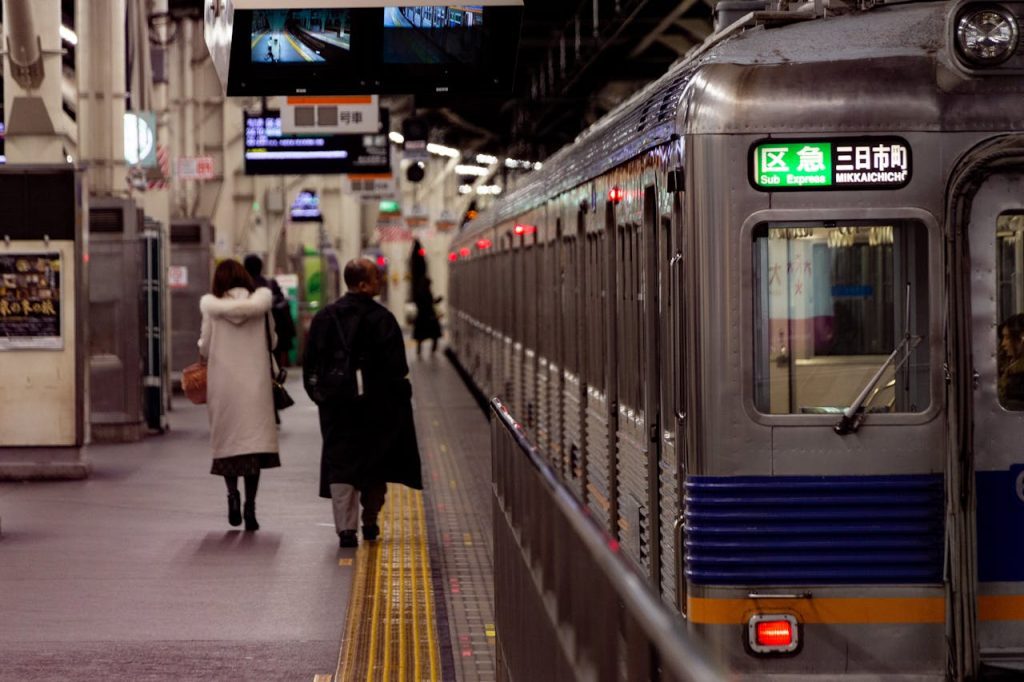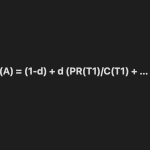When was the last time a transit ad tickled your fancy? Probably never. It’s no wonder since the ads plastered on the side of buses, at bus shelters, and lining the walls of the average subway station in North America are typically dull, outdated, and sometimes downright preachy.
Tokyo subway advertising, on the other hand, tends to be playful and eye-catching, is never outdated, and sometimes sparks enough joy to inspire a social media share.
Tokyo 2020 Olympics Asics ad: “Go, Japan!”
The Floating Futon
In 2018, for example, a bedding and sleep research company, Nishikawa Industries, launched a hanging ad campaign for their mini futon, a traditional Japanese bedding.
Whereas the typical hanging advertisement on a Tokyo subway looks like this:
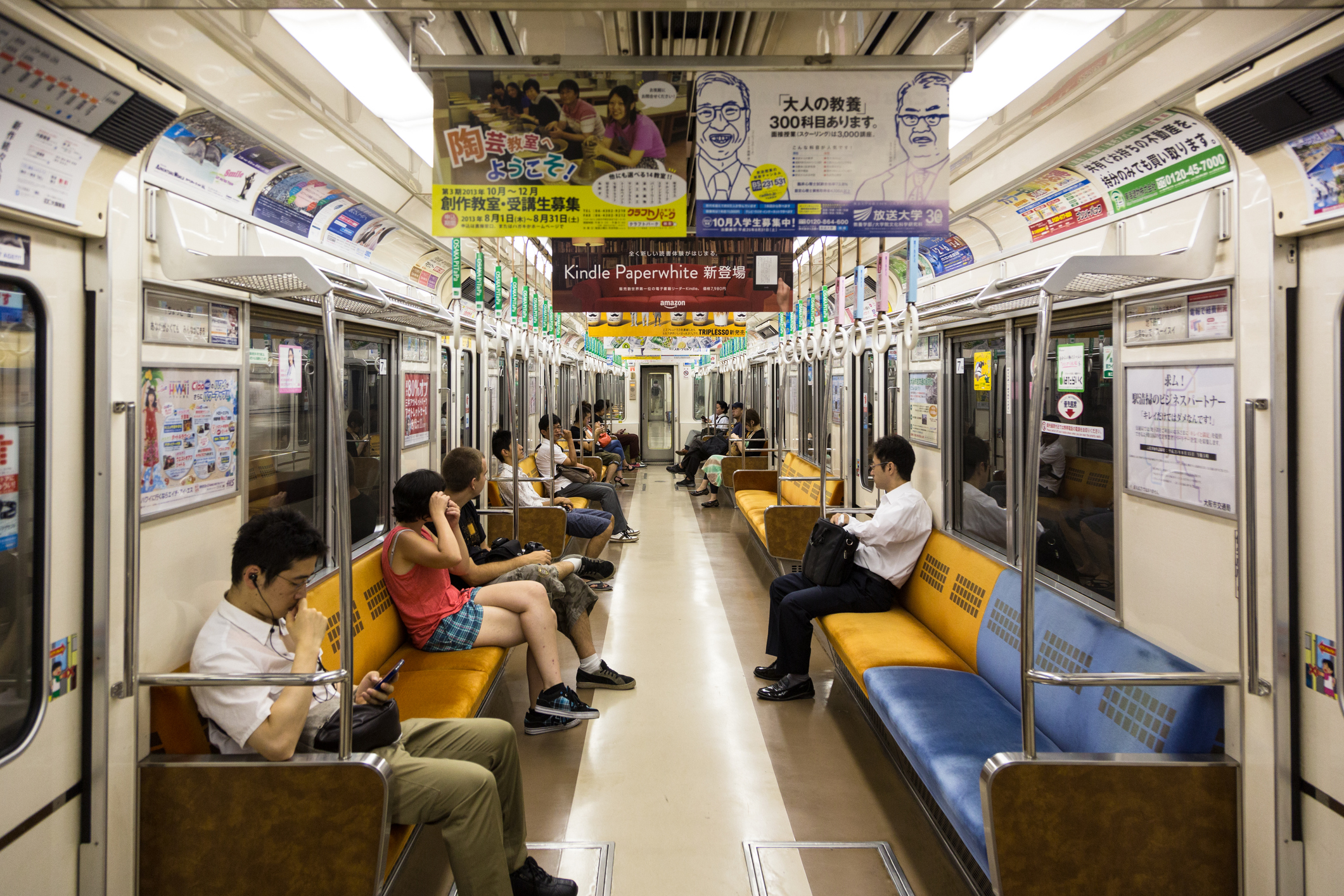
Photo: Japan Times
The Nishikawa futon campaign looked like this:
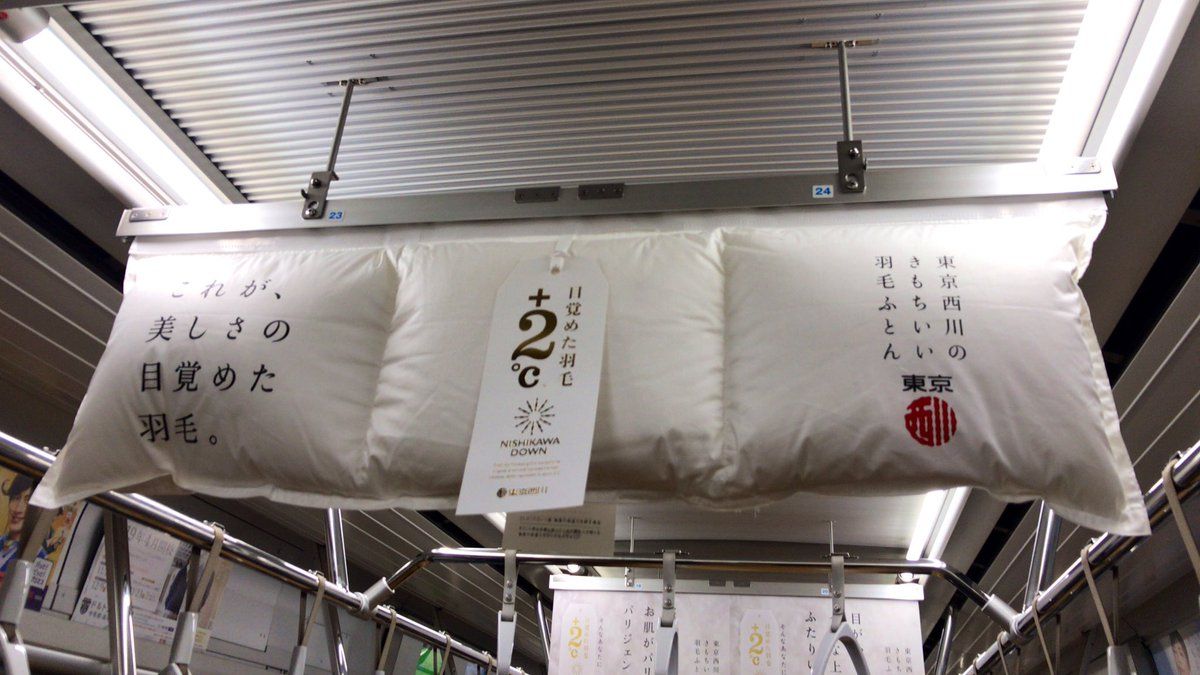
Photo: @a_y__u___miiiii
This down feather awakens beauty reads the message on the puffy clouds that hang just within reach of a little squeeze. And squeeze (and share) they did.
The Good Kind of Empty
In 2023, Borraginol, a laxative company, emptied out select Tokyo Metro trains of all advertising and paved the train’s walkway a nutty brown hue reminiscent of, well, you know.
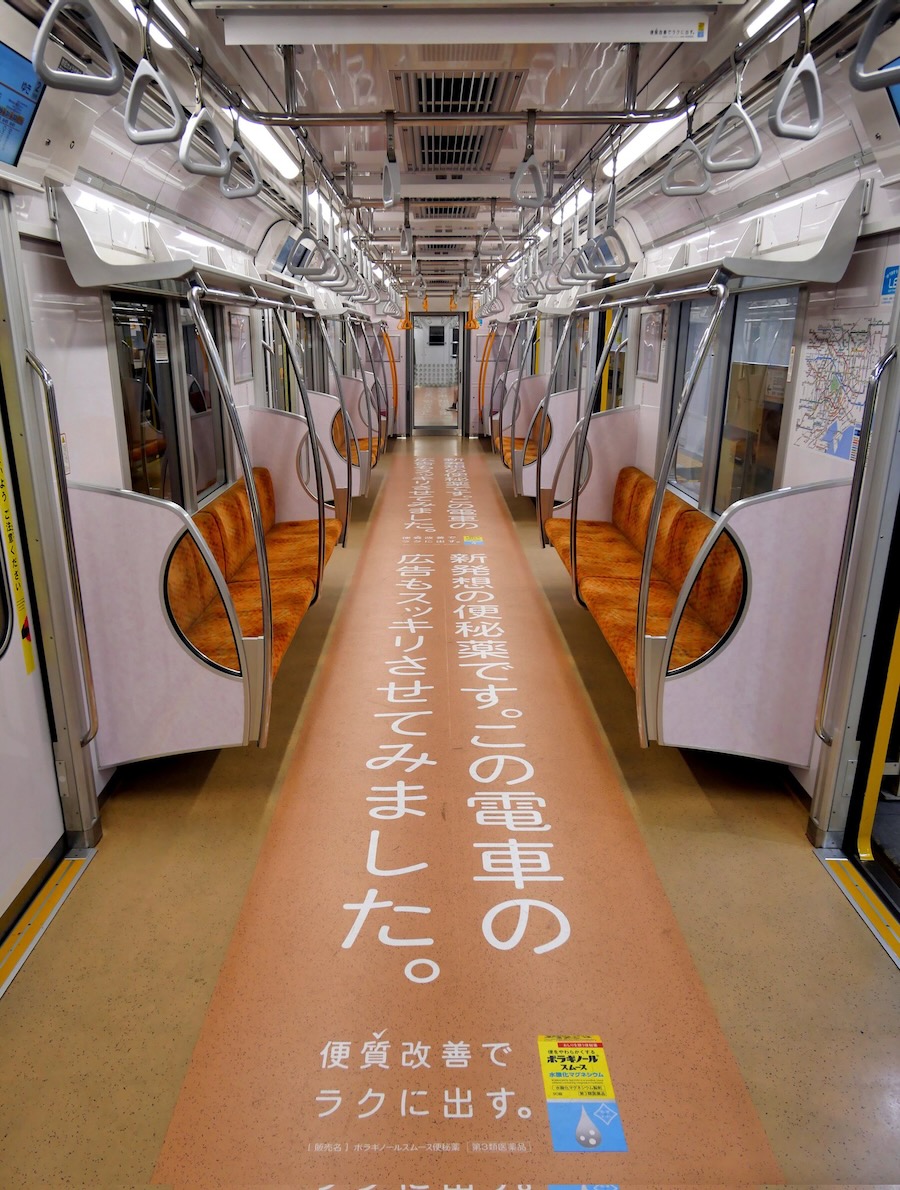
It was a win-win: visual reprieve for the ad-weary and a dose of humour for an otherwise predictable commute.
Turning Mundane Messaging into Art
The metro ads in Tokyo ever have a way of turning mundane messaging into eye-catching art.
Since 2014, the Tokyo Metro has run a Manners Awareness poster campaign, soliciting the public to apply their creativity and sometimes humor to convey transit etiquette.
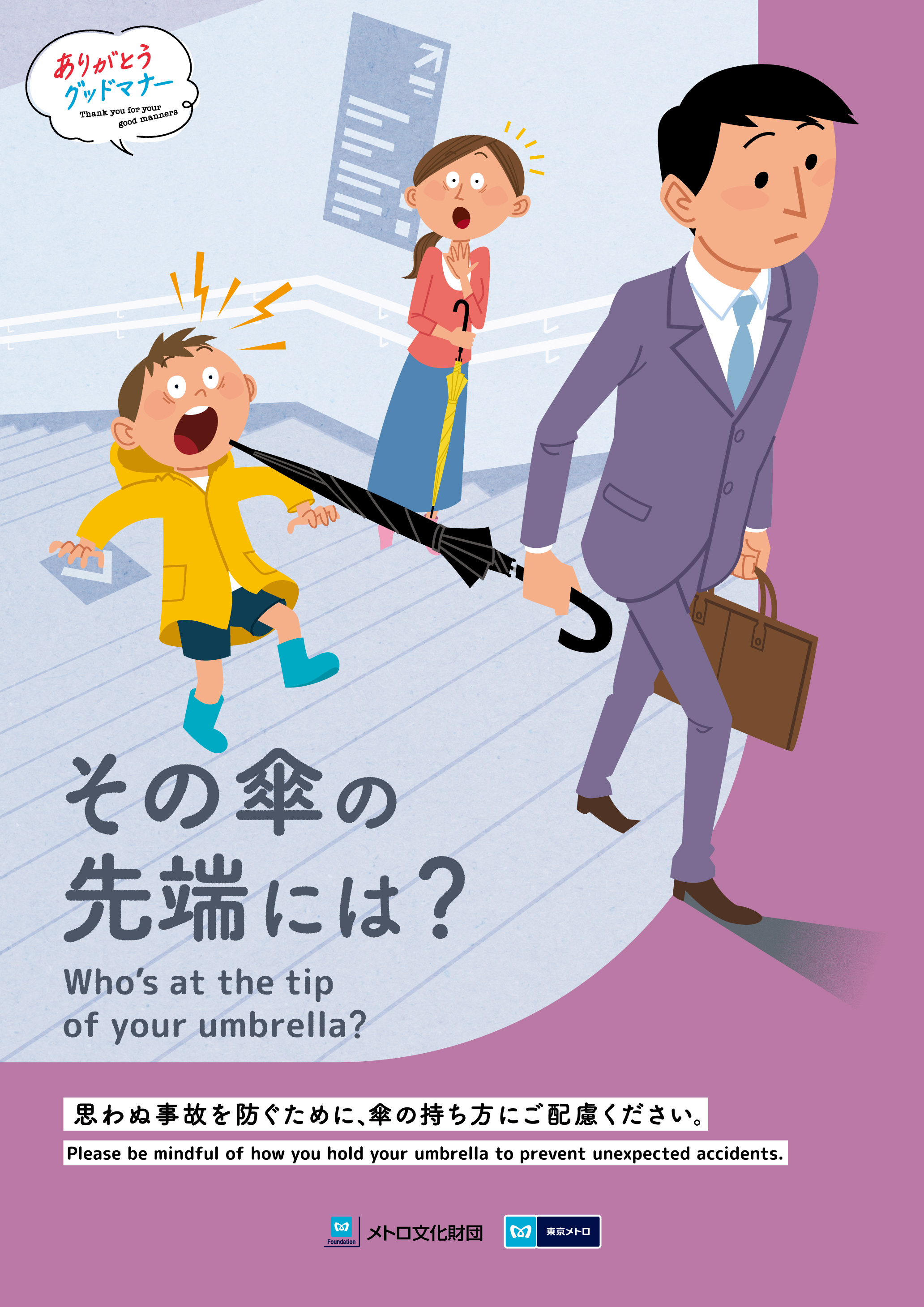
2023 Manners Awareness Poster: Who’s at the tip of your umbrella?
The result has been a decade’s worth of original and humorous ads that gently reminded locals and foreigners alike: Please mind your manners.
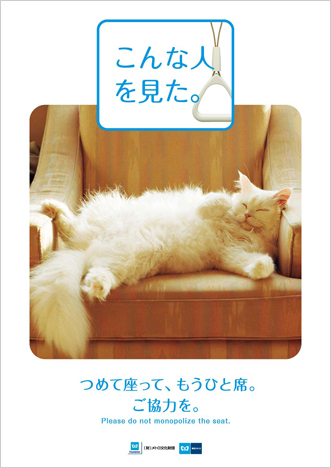
2011 Tokyo Metro Manners Awareness Poster: Please do not monopolize the seat
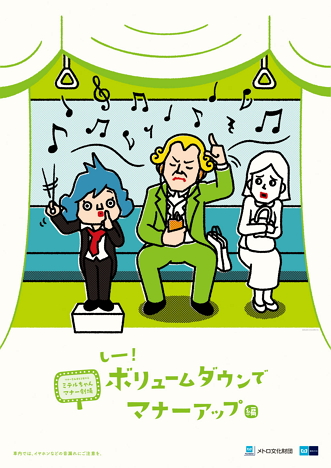
2015 Tokyo Metro Manners Awareness Poster: Volume down, manners up
Tokyo Subway Advertising: a Creative Use of Ad Space
Part of what allows for ad creativity is the unique sizes, shapes, and locations of the ad space. In addition to the hanging poster and floor ads, suspended grab handles have wrap-around advertising space.

Almost every nook and cranny on a Tokyo Metro car has space for advertising.

How Much is a Tokyo Subway Ad?
But Tokyo Metro ads come at a steep price compared to what it would cost in Canada or even the US. A seven-day advertising campaign via a double-wide hanging poster like the floating futon campaign ranges from USD 17K to over $21K, depending on the popularity of the train line. You can only imagine what a pretty yen the laxative ad stunt cost.
The cost difference makes sense when you consider that the SkyTrain system in Vancouver, BC, for example, carried approximately 11 to 13 million passengers per month so far in 2024. In comparison, the Tokyo Metro has an average daily ridership of 6.84 million people. The New York subway ridership is 3.6 million people per day and therefore nothing to sneeze at, the returns that advertisers reap by advertising on the Tokyo Metro are worth the cost.
Though the volume of ads on the Tokyo Metro may feel like sensory overload compared to a typical subway train in Canada or the US, the Tokyo subway ads are easier on the eyes and more likely to make you crack a smile.

